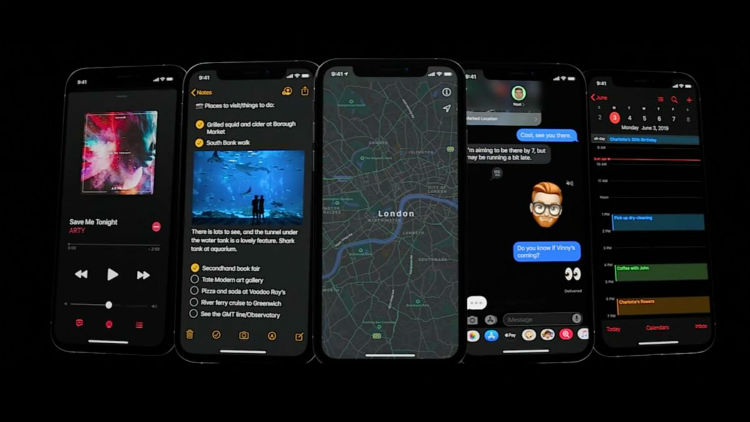Did you know that we have over four billion email users worldwide? Moreover, these users are expected to maintain at least two email accounts by the year 2022. Most young users having multiple email addresses seek to keep their personal emails protected from spam and promotional messages. However, buying something online, participating in online webinars and events, and social media activity are inseparably connected with getting into marketers’ lists of email contacts.

The above facts might suggest that most inboxes are overcrowded. This happens because over 55% of internet marketers still believe that email marketing offers the best returns on their investment. Almost half of all people like receiving promotional emails regularly, which encourages these marketers’ efforts.
Since email marketing isn’t dying any time soon, it’s normal to expect various trends that shape it. For instance, 2020 had different trends shaping the email marketing industry. So, remain with this post to learn more about how they shaped this year and how they could still rule in 2021.
Voice Integrations
Voice integration is the first trend our study experts unearthed for 2020. In the past few years, voice search has significantly shaped many industries, with people using this technology in their online shopping searches instead of traditional typing searches. One study shows that half of all online searches will be based on voice before the end of 2020.
So, how is this technology shaping email marketing in 2020? Here is what Polly Kay from English Blinds says about its impact on email marketing. Let’s break down what he said into the following:
- Making email marketing content easy for voice commands is one of the leading trends that will shape this year.
- Increased user familiarity with and dependence on voice-enabled smart devices will fuel this trend in 2020.
- The very prospect of a potential customer hearing their emails being read to them by smart devices is a key factor that’s driving the integration of voice capabilities in email marketing.
- All marketers should optimize their campaigns to ensure that their emails achieve the same audio results the way they do visual ones.
- Marketing experts must make their emails more screen-friendly to achieve better results with their marketing efforts this year.
- This trend will not just rule 2020, but it will also spill into the years ahead as it integrates with other dominating trends.
Did you hear the facts spilling from the mouth of the “horse?” We can add no more.
Customer Feedback, Ratings, and Reviews
Like all other forms of marketing, user reviews, feedback, and ratings are critical to any marketer’s success. Modern marketing at times goes overboard with many claims users can’t practically verify. For instance, it’s difficult for an average person to know which vendor is the “best” by merely believing adverts.

Therefore, it’s necessary to have a neutral referee-like person to testify to a given product’s or service’s actual efficacy. Fortunately, honest reviews come in handy at this point. The reason is that people believe what real users say about a product or service more than they trust advertisers. They even trust them more when they come from people they can relate to as peers.
It’s no wonder one study reveals that more than 90% of online shoppers read consumer reviews before making buying decisions. Additionally, more than 80% of these shoppers see customer reviews as a form of “peer recommendation,” proving that other people’s opinions matter much more than bold marketing claims.
We can now see why smart email marketers in 2020 are resorting to honest user reviews and ratings. The era of fake bulk reviews seems to be over, with marketers striving to activate their current buyers, urging them to share experiences and recommend some services and products to others. We still expect this trend to spill into the future because people are still the same. They still want credibility and proof for all the claims accompanying adverts.
Artificial Intelligence is Taking Center Stage

Artificial intelligence is here with us and to stay for the foreseeable future. This technology may not have gained mainstream momentum in traditional marketing. However, it’s fast gaining traction in online marketing, email marketing being one of its beneficiaries.
Many email marketing experts are resorting to this technology because it advances their process automation. This way, it enables marketers to offer the most relevant information to prospective or current buyers.
Also, AI learns from previous user behaviors to predict future actions. It isn’t surprising that marketing experts integrate AI algorithms and systems into their email campaigns this year. It’s an excellent tool for achieving higher relevance and accuracy in marketing campaigns.
Automation is Around for the Long-term
Automation is not a new technology in online marketing. However, this year saw its increased integration into email marketing. This increased integration agrees with and mirrors what Social Media Today reveals that 75% of marketers use automation tools in their marketing campaigns. These automation tools enable marketers to capture and maintain customer attention. They also assist them in achieving higher click-through rates because customized automated workflows perform better.
Automation tools also enable email marketers to map out their customer experiences and personalize their content delivery. Furthermore, they use them to save time by letting them do the following:
- Set up email funnels.
- Test subject lines.
- Gather feedback.
- Create drip campaigns.
- Send reminders.
- Trim down their daily activities to focus on qualitative leads.
- Schedule follow-ups.
Optimization for Mobile Use

The world has gone mobile, and it’s now official. This irreversible shift in how people work and live forces all savvy marketers to follow the trend and go mobile. Fortunately, email marketers are taking advantage of this trend to tap into the immense potential this platform offers.
If the figures below are anything to go by, then missing out on mobile users means losing the game even before it starts. Estimates show us that people worldwide send some 281 billion emails daily. Interestingly, 42% of these emails get read on smartphones or tablets. Don’t forget that approximately 80% of mobile users have once bought items online using their smartphones.
So, what do these figures tell us? They simply reveal that mobile is the best direction to take. Thus, all smart marketing executives who want to achieve any meaningful results are optimizing their emails for mobile use.
Remember, you don’t tell fish to come to your house to fish it. Instead, you go where the fish lives—in water. Likewise, email marketers are taking their fishing nets where potential customers “hang” out most of the time—their smartphones and tablets. Therefore, we expect to see more of this trend as this year ends and even in the foreseeable future.
Animation and Video Integration

We are all visual creatures. Most of us love watching images more than we like reading text blocks. The average person in the 21st century is more inclined to watch a video for two hours and complain it was “too short.” Meanwhile, the same person could still complain that reading a text block for 20 minutes is “too long.”
So, what does the discussed trend mean? It presupposes that integrating animation and videos into emails makes them more readable. Thus, it’s not surprising that adding videos to marketing emails increases their opening rate by almost 20%.
So, do videos influence buyer decisions in any way? Yes, they do. Research shows that 90% of consumers say product videos help them in their buying decisions. Now you know why smart email marketers are embedding videos in their emails.
Additionally, those who don’t want to embed videos in their marketing emails use GIFs or animated PNGs customized for emails. How long this trend lasts remains a mystery. But granted, we expect it to be here until we have a radical shift in people’s love for videos. Otherwise, it’s here to stay for the long-term.
Simplicity Takes Center Stage

We live in an information age where people error on the side of information bloat instead of scarcity. But this generational characteristic can be counterproductive since tons of information flood people’s inboxes. They have to wade through dozens of email messages their email providers like Gmail and Yahoo push at them.
This generation’s informational complexity necessitates a deep desire for simplicity. Hence, marketers would never err offering less instead of more information. Luckily, savvy email marketers are pushing for more satisfactory results with shorter and simpler emails.
Instead of the traditional daily bombarding that marked early email marketing, they are sending emails less frequently. For example, they prefer emailing prospects per fortnight. They are also sending simple messages with minimal designs when they integrate images into them.
Personalized and Segmented Approaches
Segmenting and personalizing marketing campaigns constitute another trend that is shaping email marketing this year. That’s why renowned email marketing experts have a lot to say about it. For instance, Chad S. White, Head of Research for Oracle Marketing Cloud Consulting and an author in this industry, made excellent predictions for this year. We can sum up his sentiments about this trend in the following sentences:
- Personalization in its diverse kinds will experience sustained growth in 2020, especially the one touching on sending time.
- More email service suppliers will continue offering personalization solutions that optimize send times based on subscriber mail-opening patterns.
- Segmentation strategies will also advance in 2020 because the modeling that relies on financial value and frequent use becomes more appealing to brands.
- Dynamic segmentation will form the future of targeting.
- More marketers and businesses will adopt segmentation to match their frequency to their engagement levels and optimize their client value.
So, we can conclude that smart email marketers focus more on proper timing. The reason is that optimal sending time affects the chances of opening and even reading marketing emails.
Integration with Social Media

The integration of social media into email marketing this year doesn’t come as a surprise. The reason is that social media is here with us to stay. Moreover, social media platforms are gaining more users, as smartphone technology continues growing.
It’s not surprising that Statista Research reveals that over 3 billion people will be using social media before this year ends. These figures imply that nearly 40% of all adults use these platforms. So, email marketers have every reason to “hang” in these networks to optimize their campaigns.
In 2020, smart marketers are adding social media buttons to their emails. This addition enables them to increase their chances of getting their emails being shared out. This way, subscribers can recommend their email offerings and make their friends or family members potential customers.
Also, it helps them build their audience and increase their engagement. This shareable nature breaks their marketing and subscription limitations, ushering them into new frontiers.
Besides, other savvy email marketers use their social media engagements to invite their followers to subscribe to their email newsletters. This interconnection ensures that they always have a pool of potential customers to add to their mailing lists even if hackers hack their social media pages.
The Tension Between Personalization and Privacy Continues
Although email marketing is legal, balancing personalization and privacy remains a contested issue. This tension has prompted states and governmental blocs to draft legislations that protect user privacy. For instance, California has drafted its laws governing consumer data privacy. Therefore, email marketers will need to be careful about how they address privacy issues. From Europe to North America, the wave of legislation is sweeping across the world. Below are some of the legislations that email marketers will have to be aware of and abide by this year.
All these legislations put a sword in users’ hands to demand more privacy. Thus, marketers will walk a tight rope to balance their marketing efforts with legal compliance.
Although the above legal frameworks don’t directly affect email marketing, they still empower consumers. However, it will be every email marketer’s duty in 2020 to engage consumers in a manner that makes them want to join or remain on their mailing lists.
Dark Mode is No Longer in the Dark

Display issues are still relevant and affect how people interact with emails. That’s why leading tech giants have introduced dark mode to their operating systems. For example, Apple introduced dark mode to OSX and IOS last year, making it an option for Macs and PC users.
However, how emails display on different platforms varies. Email readers also treat them differently across these platforms. This balance presents a tough challenge to email marketers. Users are usually very unforgiving to marketers who send emails that don’t display well on different dark modes.
Therefore, this year, smart marketing campaigners will be taking their time to test and see how their emails display on dark modes on different gadgets. Otherwise, they could sabotage their campaigns’ success.
A Shift from Hard Selling to Relationships
A shift from hardball selling tactics to relationships is the last email marketing trend we examine in 2020. Remember, people enter the new year after a long holiday that bombarded them with all manner of sales offers. Before long, they have the Passover in April, also knocking at their doors with sales offers. Before the year ends, Black Friday is here to usher them into another prolonged year-end sale season, and so many holidays and events await in the middle.

Definitely, all these sales seasons require a break, if not a replacement. It’s not surprising that experts recommend and predict a radical shift from constant product promotion to building relationships.
According to Aiden Angeli from Ripe Marketing, email marketers shouldn’t always be selling. She advises them to provide useful ideas, videos, and useful materials that add value to their lives and help them solve their daily life problems. She adds that these resources shouldn’t necessarily relate to promoting an email marketer’s solutions. Instead, they can touch on an area of help or need that is relevant to their offerings.
Dre Baldwin from DreAllDay also shares similar sentiments by emphasizing developing connections with audiences. For instance, email marketers can tell stories or share events going on in their lives and businesses. Dre adds that although marketers can feature CTAs in their messages, they should nurture strong bonds with their audiences.
Daniel Wittler from Stodzy Internet Marketing also shares the above sentiments. He suggests that marketers can forge strong relationships, especially at the start of the year. They can do this by posting a question in their emails asking people what they expect to receive or hear from the marketer that year. This action builds a robust platform for engaging and conversing with their audiences.
Closing Remarks
The year 2020 has been a challenging season for many online marketing executives worldwide. It came with many health and financial challenges the Coronavirus caused many nations. However, the year 2020 still presented marketers with many fantastic opportunities in the form of trends that ruled it. We hope the leading online marketing patterns we discussed will give you a better idea of what you can look forward to in the future.
About the Author
Nicole Henry is an IT PM(in the past) and freelance journalist. He is the guru to hundreds of students, the author of hundreds of analysis studies, and the voice behind most liked articles on content creation and strategy at PrivateWriting.


